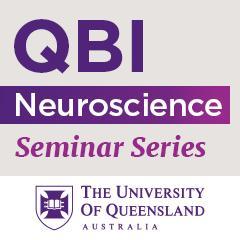Sooraj Das : "Phosphorylation of the GluN2B subunit at Ser-1480 controls activity-induced degradation of NMDA receptors" and Valerio Tettamanti : "Novel methodologies for investigating the development of vision in a coral reef fish family (Pomacentridae)"

1. Sooraj Das (Synaptic Neurobiology Group, Anggono Lab)
Title: Phosphorylation of the GluN2B subunit at Ser-1480 controls activity-induced degradation of NMDA receptors
N-methyl-D-aspartate (NMDA)-type glutamate receptors (NMDARs) mediate the flux of calcium into the postsynaptic compartment, which subsequently triggers the activation of various signalling cascades that underpin multiple forms of synaptic plasticity, learning and memory. We have recently reported that the GluN2A-containing NMDARs undergo a rapid insertion into the plasma membrane during synaptic potentiation (Yong et al., Cell Reports, 2021). However, the fate of GluN2B-containing receptors remains unknown. Using the CRISPR-Cas-9-mediated labelling technique, we found that the surface and total expressions of endogenously labelled GFP-GluN2B were significantly down-regulated in the late phase of synaptic potentiation. Biochemical analysis revealed that GluN2B-NMDARs undergo lysosomal degradation, concomitant with the increase in the phosphorylation of GluN2B at Ser-1480. Furthermore, the expression of GluN2B-S1480A phospho-deficient mutant inhibits glycine-induced degradation of GluN2B containing NMDARs in primary hippocampal neurons. Our results demonstrate that the phosphorylation of GluN2B at Ser-1480 controls the post-endocytic removal of GluN2B-NMDARs, which may have implications for the structural and functional plasticity of synapses.
2. Valerio Tettamanti (Marine Sensory Ecology Group, Cortesi/Marshall Lab)
Title: Novel methodologies for investigating the development of vision in a coral reef fish family (Pomacentridae)
The visual system of fish plays a vital role in their daily life when undertaking tasks such as foraging, predator avoidance, and communication. Damselfish (Pomacentridae) vision has been studied extensively in the last decade, both at a molecular and behavioural level. Damselfishes have been found to have visual adaptations to the light environment, their feeding ecology and intra and interspecific signalling. However, the exact processes behind colour perception and the function of the different photoreceptors types are still poorly understood. To investigate the visual pathway in coral reef fish, we used a multidisciplinary approach that tackled the visual system of the false percula anemonefish (Amphiprion ocellaris) from a genetic to a behaviour standpoint. Here, I will present the first insights we gained from adapting novel molecular methodologies, including genetic engineering (CRISPR/Cas9) and single-nuclei RNA sequencing (snRNAseq) in coral reef fish. The CRISPR/Cas9 technology was used to knock out the blue-green sensitive photoreceptor (rh2b expressing). Then we used a behavioural experiment to compare brightness vision in 'colour-blind' anemonefish with wild-type fish. We found that colour-blind fish had decreased ability to detect brightness differences in green but not for other colours within their visual space. snRNAseq analysis allowed us to identify the different retinal cell types in wild-type and knockout clownfish and create a reference for future research in marine fishes. This work showcases modern molecular techniques applied to non-model species while advancing our understanding of coral reef fish vision.
About Neuroscience Seminars
Neuroscience seminars at the QBI play a major role in the advancement of neuroscience in the Asia-Pacific region. The primary goal of these seminars is to promote excellence in neuroscience through the exchange of ideas, establishing new collaborations and augmenting partnerships already in place.
Seminars in the QBI Auditorium on Level 7 are held on Wednesdays at 12-1pm, which are sometimes simulcast on Zoom (with approval from the speaker). We also occassionally hold seminars from international speakers via Zoom. The days and times of these seminars will vary depending on the time zone of the speaker. Please see each seminar listed below for details.



